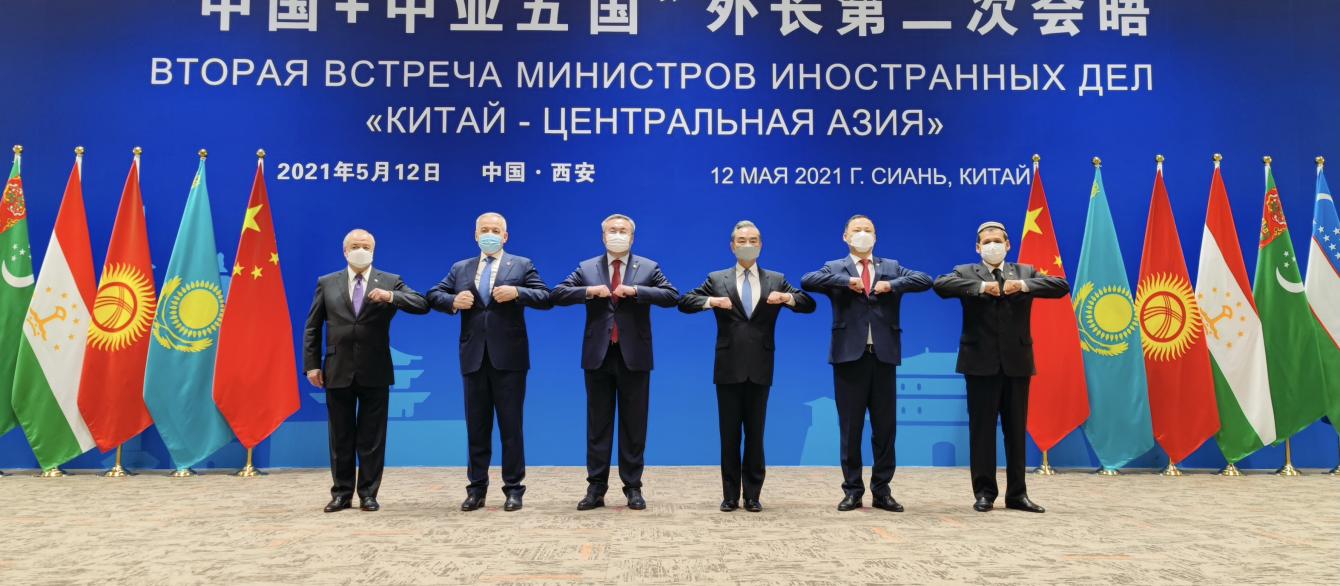Summary
The five independent states of Central Asia—Kazakhstan, Kyrgyzstan, Tajikistan, Turkmenistan, and Uzbekistan—are among the primary recipients of China’s foreign aid. Staple items include buses and tractors; military equipment and police vehicles; and the construction of hospitals, schools, and government buildings. Chinese government agencies also sponsor scholarships for Central Asian students and training programs for Central Asian civil servants and military officers. Such acts of giving are an important facet of China’s foreign policy in its neighborhood and with the rest of the world. They help build relationships by fostering political, social, and cultural bonds at multiple levels (government-to-government, leader-to-leader, and people-to-people).
The Chinese government describes the country’s foreign aid as drawing on “the Chinese nation’s ideal of universal harmony” and “the Chinese tradition of internationalism.” Over the years, Beijing has shaped a distinctive narrative and an evolving set of practices. One feature of its approach is the framing of foreign aid as a form of South-South cooperation, stressing equality as the basis of relationships with other countries. However, this equality rhetoric does not square well with the unidirectional (rather than reciprocal) nature of foreign aid and China’s claims of being a big country obliged with duty, mission, and benevolence that it needs to exercise toward smaller states.
Despite major imbalances of power between China and Central Asian states, Chinese leaders have engaged in regular and carefully choreographed ceremonies of rendering respect to their counterparts in the region. The pomp and circumstance of such meetings and the partnership rhetoric could only partially soften the realities of a hierarchical order, one in which China is the major power and the donor. While Central Asian states cannot reciprocate China’s gifts, they partially give back by meeting China’s political goals by affirming the One China principle and commitment to struggle against ethnic separatism, religious extremism, and terrorism.
In rendering aid, China pledges to respect other developing countries’ opinions and their development level and needs. In Central Asian countries, Beijing prioritizes the types of assistance that best address local needs. However, these are local ruling elites who define those to serve their own agendas. Chinese foreign aid helps mitigate deficiencies in their governance, burnish their reputations in the eyes of their constituents and bolster their own prospects and fortunes.
Chinese foreign aid has a strong emphasis on developing interpersonal ties and networks. The participation of Central Asian officials, military personnel, engineers, and others—many of whom have close ties to these countries’ ruling circles—in projects and trainings organized by the Chinese government creates opportunities for social bonding and broader Chinese inroads into local politics. And this Chinese approach resonates well with the emphasis that Central Asian elites place on interpersonal relations and their cultivation through gifts, favors, and banquets. In this sense, Chinese and Central Asian political cultures have notable overlaps. China has learned to leverage these commonalities to advance its influence.
This relationship involved a learning process. The study of Chinese aid to Kyrgyzstan and Tajikistan shows how the two sides have continually familiarized themselves with each other’s ways and have adapted accordingly. China has adopted an approach focused on the ruling elites of recipient countries. Central Asian governments, for their part, are watching China’s rise and Chinese engagement and aid elsewhere in the world and modifying their requests accordingly.
China has learned to vary its Central Asian gift giving based on the different political and elite circumstances that prevail in each country. There has been a continuity of Chinese engagement in Tajikistan, where a single president, Emomali Rahmon, and his elite supporters have held power for decades. Both China and Rahmon and his circles have evolved a pattern of ensuring mutual payoffs from these investments. By contrast, Kyrgyzstan has weathered frequent changes of leaders, sometimes in revolutionary circumstances, that have, on the surface, been disruptive to Chinese efforts to cultivate bonds with local elites. Yet in Kyrgyzstan, too, China has maintained its influence, adapting to each cycle of disruptive political change by tailoring its gifts and offerings, engaging with new faces and a diverse range of elites in power.
Behind the proper appearances and rhetoric, the perceptions and feelings held by both sides are more complicated. Central Asian recipients of Chinese aid are suspicious about the real motives behind this assistance. The ruling elites who solicit and receive these gifts must work extra hard to filter them through local political contexts and conditions because ordinary Kyrgyz and Tajik citizens often express doubts on social media about the intent and goals behind such interactions.
As a result, China’s relationships with Central Asian states are complex, friction-laden, and not nearly as harmonious as Beijing likes to portray them. Despite the rhetoric of South-South cooperation, the people of Central Asia sense a new hierarchy emerging and nurture publicly expressed fears that their countries will be overwhelmed by China. Local elites have learned to benefit from Chinese engagement and express gratitude; however, their loyalty is fluid and determined by local power configurations. China will need to continue to adapt, since political change is likely to persist in Kyrgyzstan and eventually to come to Tajikistan as well.
The marriage of material gifts to interpersonal elite social bonds is a distinctive feature of China’s approach to Central Asia. This characteristic contrasts starkly with the approach preferred by the transatlantic West, which has tended to anchor its engagement with Central Asia in political norms and principles. The Chinese order is more elastic in accommodating different types of polities, but it clearly and unambiguously serves China’s interests. Nonetheless, Beijing’s approach also entails riding waves of local resentment that only the region’s elites know how to properly manage and navigate.
This is the summary of a paper published in December 2022 by the Carnegie Endowment for International Peace as part of its China Local/Global series, which explores Chinese engagement strategies in seven regions of the world. The paper is now also available in Russian.






